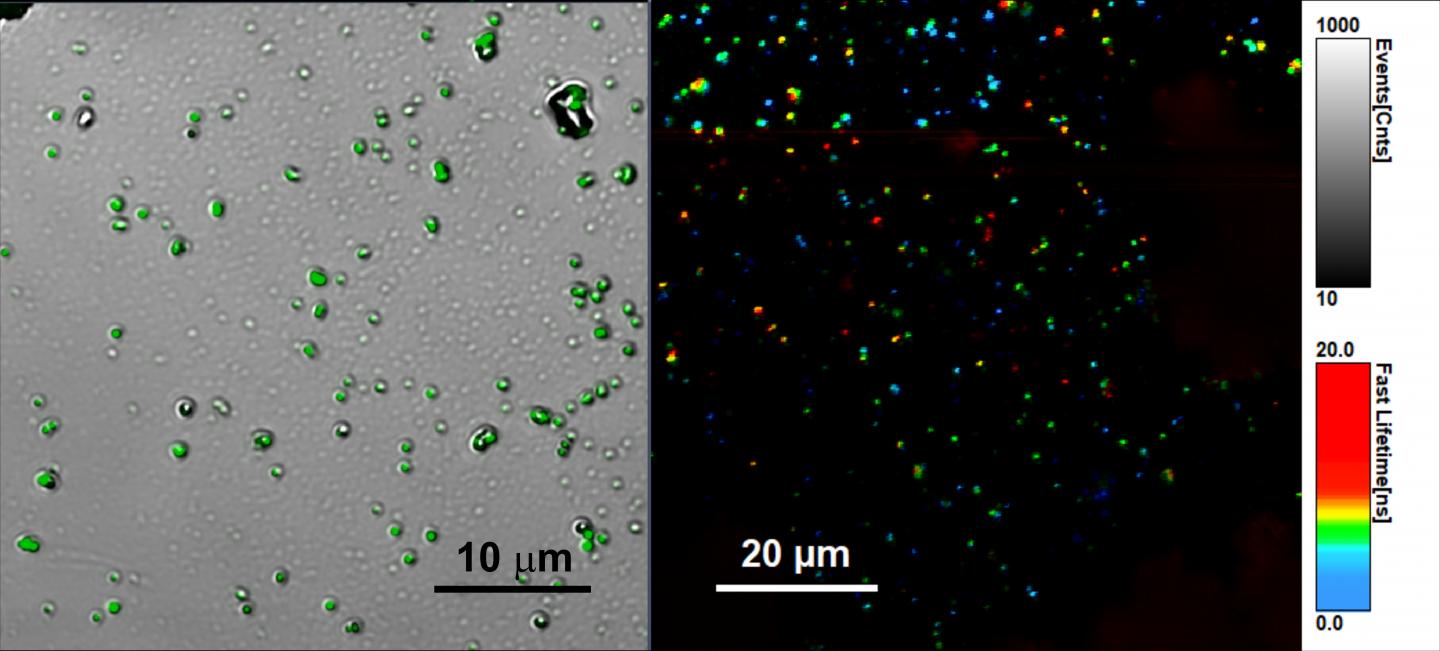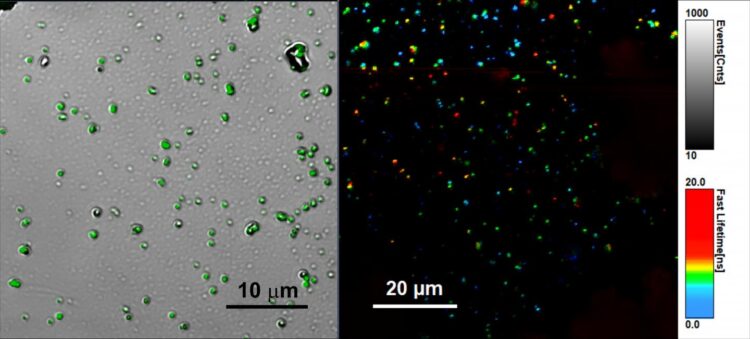Scientists develop light-emitting composite material based on perovskite nanocrystals with air- and water resilient optical characteristics

Credit: ChemNanoMat
An international team of scientists that includes researchers from ITMO University has developed a new composite material based on perovskite nanocrystals for the purpose of creating miniature light sources with improved output capacity. The introduction of perovskite nanocrystals into porous glass microparticles made it possible to increase their operating time by almost three times, and the subsequent coating of these particles with polymers – to increase the stability of their optical properties when underwater, which is especially important for the purposes of creating light sources for application in biological media. The results have been published in ChemNanoMat.
Perovskite nanocrystals are some of the most researched objects in modern materials science. They have excellent optical properties, such as the purity and brightness of emitted light, which makes them appealing for use in modern laser systems. At the same time, perovskites are unstable in the air, when interacting with water, as well as under intensive illumination. This is why the improvement of perovskite nanocrystals’ stability is one of the key tasks that stands before the scientific community.
An international team of scientists that includes researchers from ITMO University, Ioffe Institute, as well as City University of Hong Kong, studied various conditions for the introduction of perovskite nanocrystals into porous spheres of silicon dioxide that can act as both protective matrices and optical resonators for spontaneous amplification of the luminescence signal. Their research identified the optimal parameters for the manufacturing of a perovskite nanocrystals-based luminescent material where the emission intensity stayed at 85% of the original, which is significantly higher than that of the same nanocrystals without a protection matrix. Such composite materials also remained stable under the effect of intensive UV radiation, which can be used as a light pumping source when designing laser systems.
“Our next step had to do with the development of a protective layer for such light-emitting microspheres with perovskite nanocrystals for the purposes of moving them into hydrous solutions,” says Elena Ushakova, an associate professor at ITMO’s Faculty of Photonics and Optical Information Technology. “In order to do this, we used the layer-by-layer technique of depositing alternating layers of oppositely charged materials on the microspheres’ surface. The resulting luminescent spheres can be dispersed in water while retaining their optical properties, which is important from the standpoint of their further application as light sources in biological tissues.”
###
Media Contact
Alena Gupaisova
[email protected]
Related Journal Article
http://dx.





